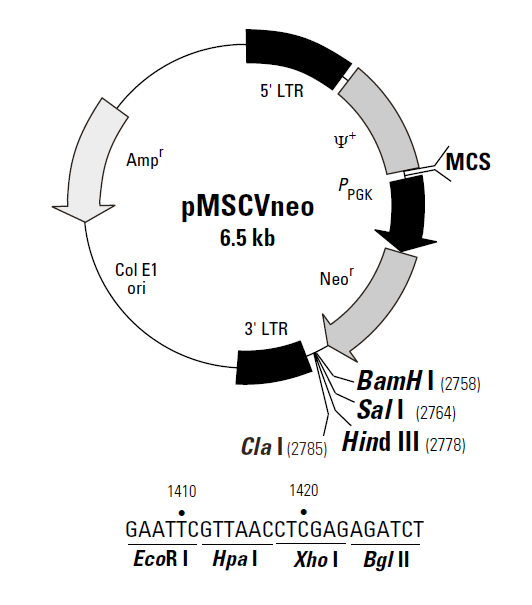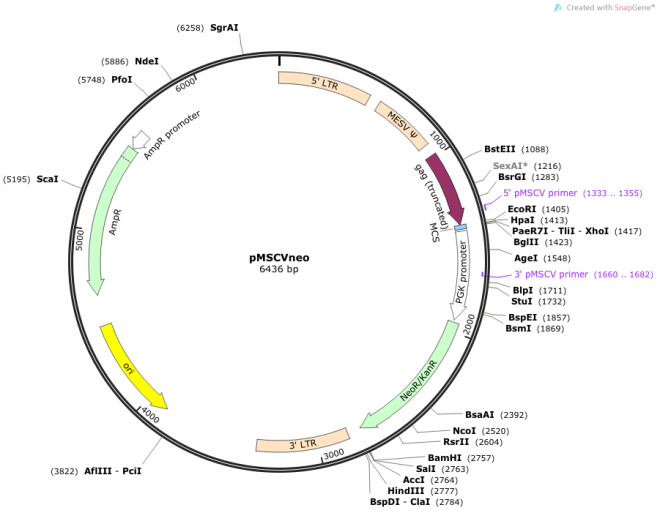
|
品牌 |
酶研生物 | |||||||||||||||||||
货号 |
MY1537 | |||||||||||||||||||
规格 |
2ug | |||||||||||||||||||
价格 |
询价 | |||||||||||||||||||
货期 |
现货 | |||||||||||||||||||
The Murine Stem Cell Virus (MSCV) vectors were derived from the Murine Embryonic Stem Cell Virus (MESV) and the LN retroviral vectors (1,2). Upon transfection into a packaging cell line, pMSCVneo transiently expresses, or integrates and stably expresses, a transcript containing the extended viral packaging signal Ψ+, the neomycin resistance gene, and a gene of interest. The vectors achieve stable, high-level gene expression in hematopoietic and embryonic stem cells through a specifically designed 5' long terminal repeat (LTR). This LTR is from the murine stem cell PCMV virus, and it differs from the MoMuLV LTR used in other retroviral vectors by several point mutations and a deletion. These changes enhance transcriptional activation and prevent transcriptional suppression in embryonic stem and embryonal carcinoma cells. As a result, the LTR drives high-level constitutive expression of a target gene in stem cells or other mammalian cell lines (3). A gene can be cloned into the multiple cloning site immediately downstream of this LTR. The murine phosphoglycerate kinase (PKG) promoter (PPKG) controls expression of the neomycin resistance gene (Neor) for antibiotic selection in eukaryotic cells. pMSCVneo also contains the pUC origin of replication and E. coli Ampr gene for propagation and antibiotic selection in bacteria. 载体应用pMSCVneo can be transfected into a packaging cell line such as the RetroPackTM PT67 Cell Line (Cat. No. 631510). Once in the cell, RNA from the vector is packaged into infectious, replicationincompetent retroviral particles. pMSCVneo does not contain the gag, pol, and env structural genes necessary for particle formation and replication: these genes are stably integrated into the PT67 genome (4–7). Introduction of pMSCVneo into a packaging cell line results in production of hightiter, replication-incompetent infectious virus particles. These particles can infect target cells and transmit the gene of interest to them. However, they cannot replicate because the target cells lack viral structural genes. The process of separately introducing and integrating the structural genes into the packaging cell line minimizes the chances of producing replication-competent virus due to recombination events during cell proliferation.
|
|
|||||||||||||||||||











